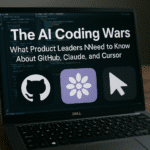Introduction
In the race to deliver features, polish specs, iterate roadmaps, and harness AI, product managers may inadvertently replicate structural vulnerabilities found in academia and AI workflows. Two recent articles—one on citation cartels, ghost writing, and fake peer review in science, and another on how “workslop” is quietly undermining AI strategies—offer potent lessons for PMs striving for clarity, rigour, and trust.
In this post, we’ll explore how academic publication fraud manifests, how AI-generated “workslop” corrupts productivity, and most importantly, how product managers can borrow from the academic world’s guardrails (peer review, standards, transparency) to reinforce their processes. You’ll walk away with an actionable “PM integrity playbook” that helps you resist sloppiness, maintain credibility, and scale your AI usage safely.
Part I: The Academic Crisis — What It Is, Why It Matters, and Its Modern Forms
1. What’s happening in academia: citation cartels, ghostwriting, fake peer review
The LiveScience article draws attention to corrupt practices in scientific publishing: citation cartels, ghostwriting, fake peer review, and gift authorship, all driven by the overemphasis on bibliometric metrics—how many publications one has, how many citations, H‑index, impact factor, etc.
– Citation cartels: groups of authors or journals that intentionally cite one another to inflate citation counts.
– Ghostwriting: manuscripts written by unacknowledged writers or “paper mills,” then published under prestigious academics’ names.
– Fake peer review: submitting fake reviewer identities or contact emails so that the author effectively reviews their own paper.
– Gift authorship: including names of people who did not meaningfully contribute, simply to boost their publication count.
These practices corrupt the system: papers that should be rejected get published, and prestige is awarded based on gaming metrics instead of real quality or insight.
2. Why this matters—and the bigger dangers
- Loss of trust: published science is supposed to be vetted; when fraud spreads, the public’s faith erodes.
- Wasted resources: following bad science leads to wasted experiments, false leads, and wrong bets.
Harmful downstream effects: in medicine, policy, engineering—invalid findings can worsen outcomes. - Systemic feedback loops: as metrics dominate hiring, promotion, and funding decisions, the incentive to bend or break rules intensifies.
As the article argues, reforms are needed at all levels: institutions, funders, journals, and individual researchers. Metrics must become less dominant, editorial and peer-review processes more robust, and whistleblower protections stronger.
Part II: The Threat of “Workslop” in AI-Assisted Work
1. Defining “workslop” and why it is spreading
From the DevelopmentCorporate piece, “workslop” is AI-generated content that looks polished but lacks depth, correctness, or context—it’s superficial and demands rework.
Some common manifestations for product managers:
– A PRD draft that omits corner cases or constraints
– A competitive analysis that “hallucinates” data or misattributes features
– User stories that cover the happy path but not error states
– Roadmap narrative that glosses over tradeoffs
Workslop proliferates because AI is baked into many PM tools, leadership often rewards “AI adoption” metrics, and the polish of AI output masks deeper defects.
2. The hidden costs: rework, misalignment, damage to credibility
The Harvard Business Review article cited by Development Corporate quantifies that the average employee spends ~2.1 hours per month cleaning up AI-generated slop, costing ~$186 in productivity per person.
For product managers, the cost is magnified:
– Engineering churn: ambiguous or mistaken specs cause misimplementation, rework, buggy releases
– Go-to-market misfires: shallow messaging and feature descriptions lead to misalignment with customers or sales
– Loss of credibility: when stakeholders perceive your docs as shallow or error‑prone, your influence erodes
– Cultural contagion: if slop becomes normalized in your team, quality standards degrade broadly
Part III: Bridging Both Domains — How Product Managers Can Adopt Academic Guardrails
1. View your artifacts as mini “papers” — apply peer review mindsets
In academia, peer review is a core mechanism to catch errors, validate logic, and reduce bias. While not all PM artifacts need full external review, you can adopt variants of this:
– Internal review cycles: circulate drafts to domain experts for critical review.
– Review templates: adopt checklists to guide reviewers.
– Blind review or alternating review pairs: rotate reviewers to reduce bias.
– Author response logs: document how feedback was addressed.
2. Define metrics—but don’t let them distort behavior
One of the root problems in academia is overreliance on metrics like citation counts, which drive undesirable behavior. The same mistake can plague product organizations.
Approach metrics as directional, not destiny. Resist “AI usage as KPI” mandates. Use quality metrics (rework time, stakeholder feedback, technical debt introduced) and maintain a balanced scorecard.
3. Label and declare AI-assisted outputs
In academic publishing, it is now considered good practice to disclose when manuscripts are AI-assisted. Product managers can do the same: mark drafts as “AI-assisted,” use version tags, maintain metadata, and document revisions. Transparency sets expectations.
4. Institute guardrails around AI “zones of responsibility”
Just as journals have standards, PMs should define safe zones and no-go zones for AI use:
– Safe zones: outlines, brainstorming, summarization
– Hybrid zones: competitive scans, feature ideation
– No-go zones: final specs, pricing decisions, external messaging
These boundaries prevent AI from overextending into costly areas.
5. Keep an ‘AI slop log’ and iterate
Just as researchers track errata, maintain a register of AI errors you’ve observed. Categorize errors, refine prompts, and review periodically. This creates a feedback loop.
6. Cultivate a culture of quality, not just speed
Sloppy output emerges when systems prioritize throughput over thoughtfulness. Communicate that clarity is non-negotiable, celebrate careful docs, resist AI-first workflows, and embed reviews into sprint cadence.
Part IV: Concrete Playbook for Product Managers (with Timeline)
| Phase | Activities | Goals / Metrics |
| Week 1 — audit & baseline | – Review the last 10 AI-assisted docs – Survey engineers/designers on pain points | Establish baseline ‘slop ratio’, rework cost |
| Week 2 — define guardrails & safe zones | – Design chart of safe vs no-go zones – Draft AI policy for PM docs | Shared understanding across team |
| Week 3 — build review mechanisms | – Create review checklists – Pilot peer review sessions | Catch defects early |
| Week 4 — launch ‘AI slop log’ | – Create repository for AI error tracking – Encourage team contributions | Feedback loop |
| Week 5+ — iterate & monitor | – Track metrics – Hold retrospectives – Adjust prompts/guardrails | Continuous improvement |
Part V: Illustrative Scenarios & Pitfalls
Scenario 1: Skipping review, shipping a weak spec
You use AI to generate a PRD and release it directly. Developers hit ambiguity, misimplement, and weeks are lost.
Fix: Enforce peer review before engineering handoff.
Scenario 2: Hallucinated competitor claims slip into roadmap narrative
AI-generated analysis misstates competitor parity. Marketing drafts messaging around it, damaging credibility.
Fix: Verify competitor claims manually.
Scenario 3: Team copy-pastes AI outlines without nuance
Junior PMs paste AI outlines wholesale, omitting critical context. Document quality degrades.
Fix: Require enrichment with domain-specific nuance, run review sessions.
Scenario 4: Overemphasis on AI adoption as a KPI
Leadership tracks AI draft counts, incentivizing superficial work.
Fix: Advocate for quality metrics tied to clarity and stakeholder trust, not usage volume.
“Workslop” is polished-looking but shallow or faulty AI output that sneaks into specs, PRDs, and roadmaps. It increases rework, erodes stakeholder trust, and can derail delivery timelines if not caught early.
Adopt structured internal reviews with checklists, rotate reviewers to avoid bias, and keep an author response log documenting how feedback was addressed. Treat key artifacts like “mini papers” that must withstand scrutiny before handoff.
Final PRDs, pricing and compliance language, security/privacy statements, and external-facing messaging. Use AI for outlines or boilerplate, but require human verification for the final text and all critical claims.
Verify problem statement, scope, non-functional requirements, edge cases, dependencies, acceptance criteria, metrics, data/privacy constraints, and rollback plans. Confirm sources for market or competitor claims and log all reviewer notes with resolutions.
Yes. Label early drafts as “AI-assisted,” use version tags (e.g., v0.2 AI outline, v1.0 human-edited), and maintain a brief revision log. Transparency sets the right expectations and invites more rigorous review.
Balance quantity metrics with quality signals: rework hours, defect leakage, stakeholder satisfaction, and clarity scores from engineering and design. Avoid KPIs that reward “AI usage volume” over document quality and decision fitness.
It’s a shared register of AI mistakes (hallucinations, missing constraints, vague criteria). Categorize issues, link to examples, and refine prompts, templates, and guardrails based on recurring patterns. Review it in retros to drive continuous improvement.
Start with a 4-week pilot: baseline rework, define safe/no-go AI zones, introduce a lightweight review checklist, and launch the slop log. Iterate every sprint, measuring reduced ambiguity and rework to prove net acceleration over time.
Invite tech leads to co-author the review checklist and define acceptance criteria. Demonstrate how clearer PRDs reduce churn, context switching, and defects—then publish before/after rework metrics to reinforce the value.
Yes. Documented review, transparent sourcing, and explicit assumptions raise confidence with Sales, CS, and customers. They’ll see fewer corrections later and more consistent messaging aligned to real capabilities and constraints.

